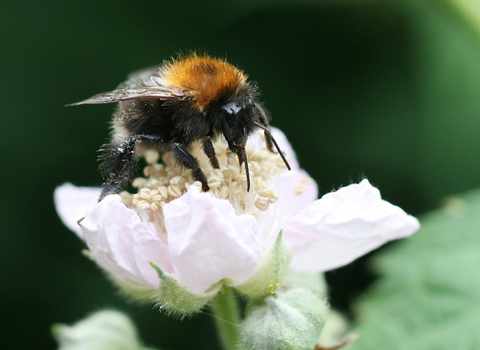
Tree Bumblebee ©Penny Frith
Tree bumblebee
The tree bumblebee is a new arrival to the UK. First recorded here in 2001, it is slowly spreading north. It prefers open woodland and garden habitats and can be found nesting in bird boxes and roof spaces.
Enw gwyddonol
Bombus hypnorumPryd i'w gweld
March to JulyTop facts
Stats
Length: 1.0-1.6cmIntroduced, non-native species.
Ynghylch
The tree bumblebee is a relatively new arrival to the UK. It was first recorded here in 2001 and is slowly spreading north throughout the country. It can now be found in much of England and Wales and has reached Southern Scotland. It is associated with open woodland, so is commonly found in gardens that have a similar type of habitat. It nests in cavities, such as old birds' nests, bird boxes, or roof spaces.It visits a wide range of flowers, particularly those of soft fruits, such as raspberries and blackberries. It emerges from hibernation early in the spring, around February or early March. Males are seen in late May and June, and adults can still be seen in late autumn if nests have a second generation.
What to look for
The tree bumblebee has fuzzy, browny-orange hairs on its thorax, a black abdomen, and a white tail.Where to find
Found in England and Wales, and Southern ScotlandRoeddech chi yn gwybod?
During May and June, tree bumblebees can be seen 'swarming' around their nest entrances, which can be alarming if they are nesting in your roof or garden! But it's not a cause for worry. It is actually lots of males buzzing about, waiting for the queens to emerge so that they can mate with them. The males do not have stingers, so are harmless.Gwyliwch
Tree bumblebee (https://vimeo.com/500926244)
Tree bumblebee bumbling off flower ©Tom Hibbert
